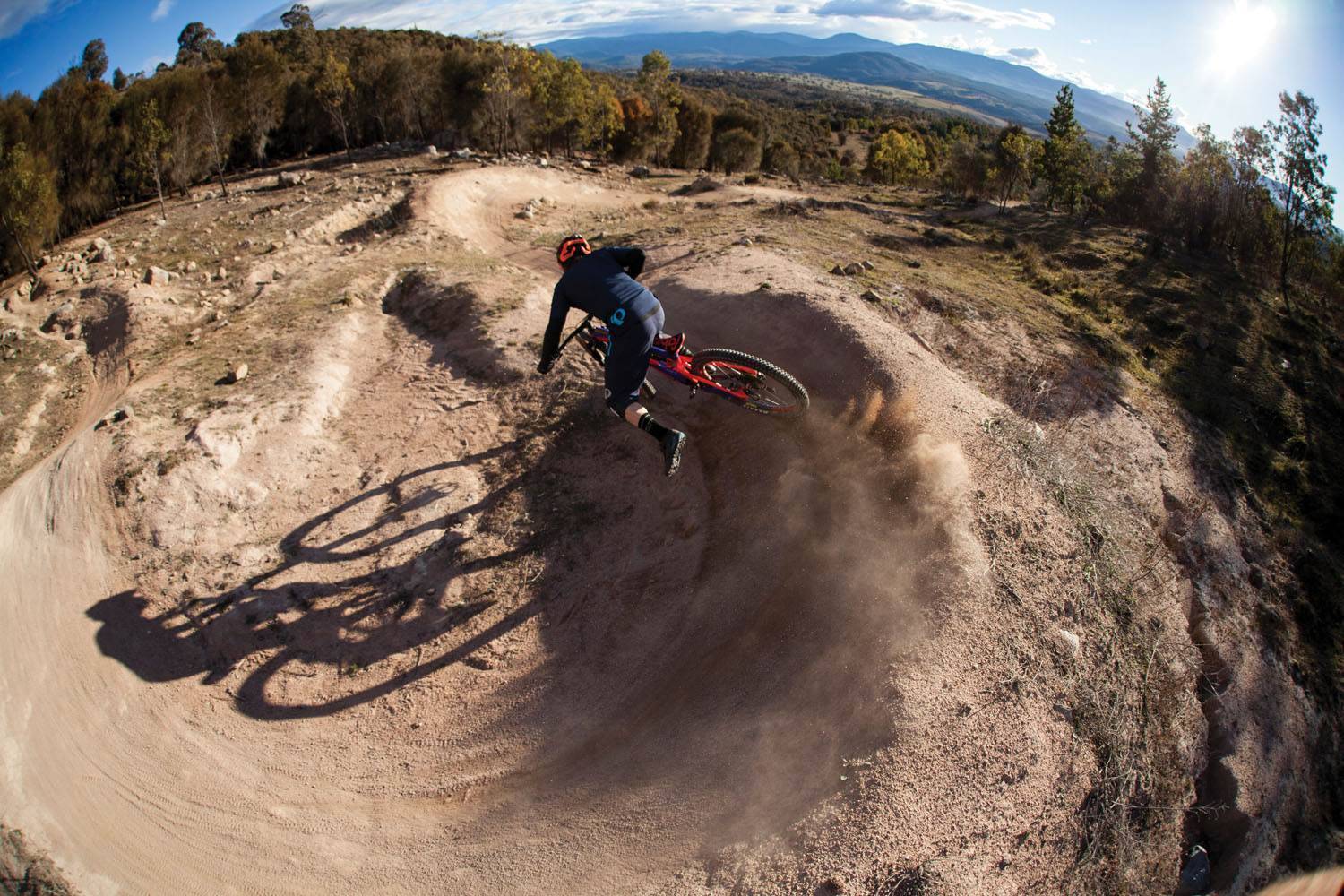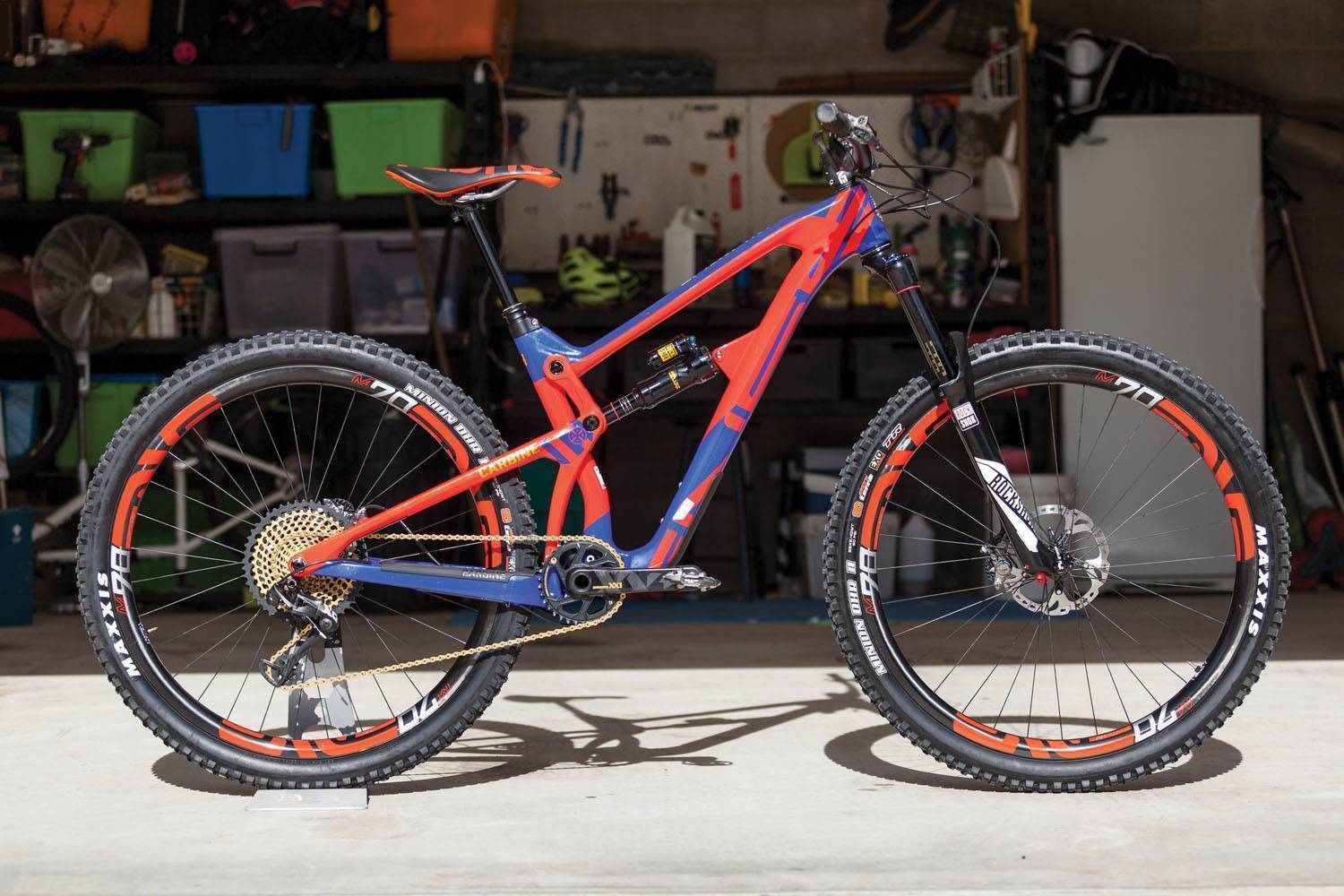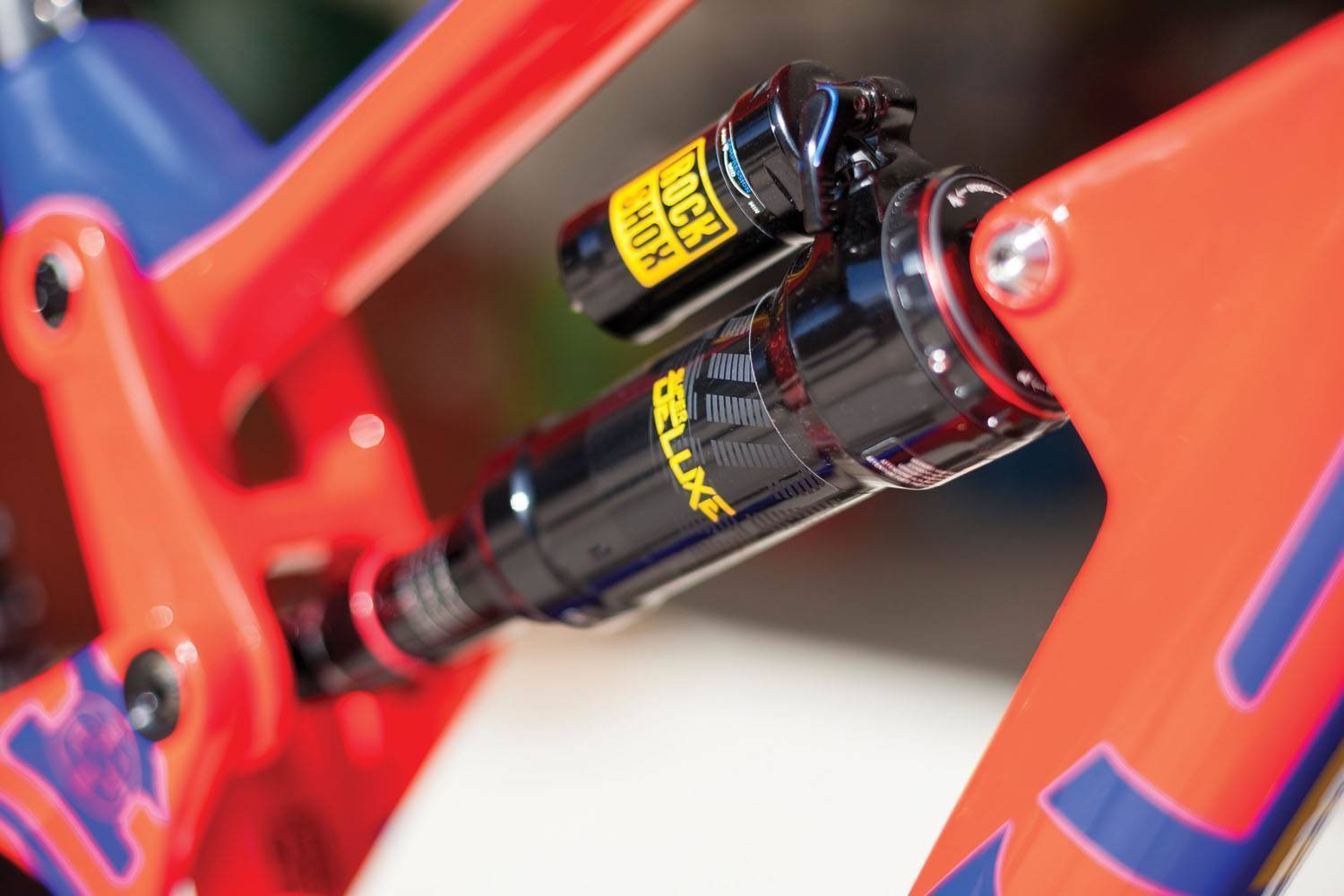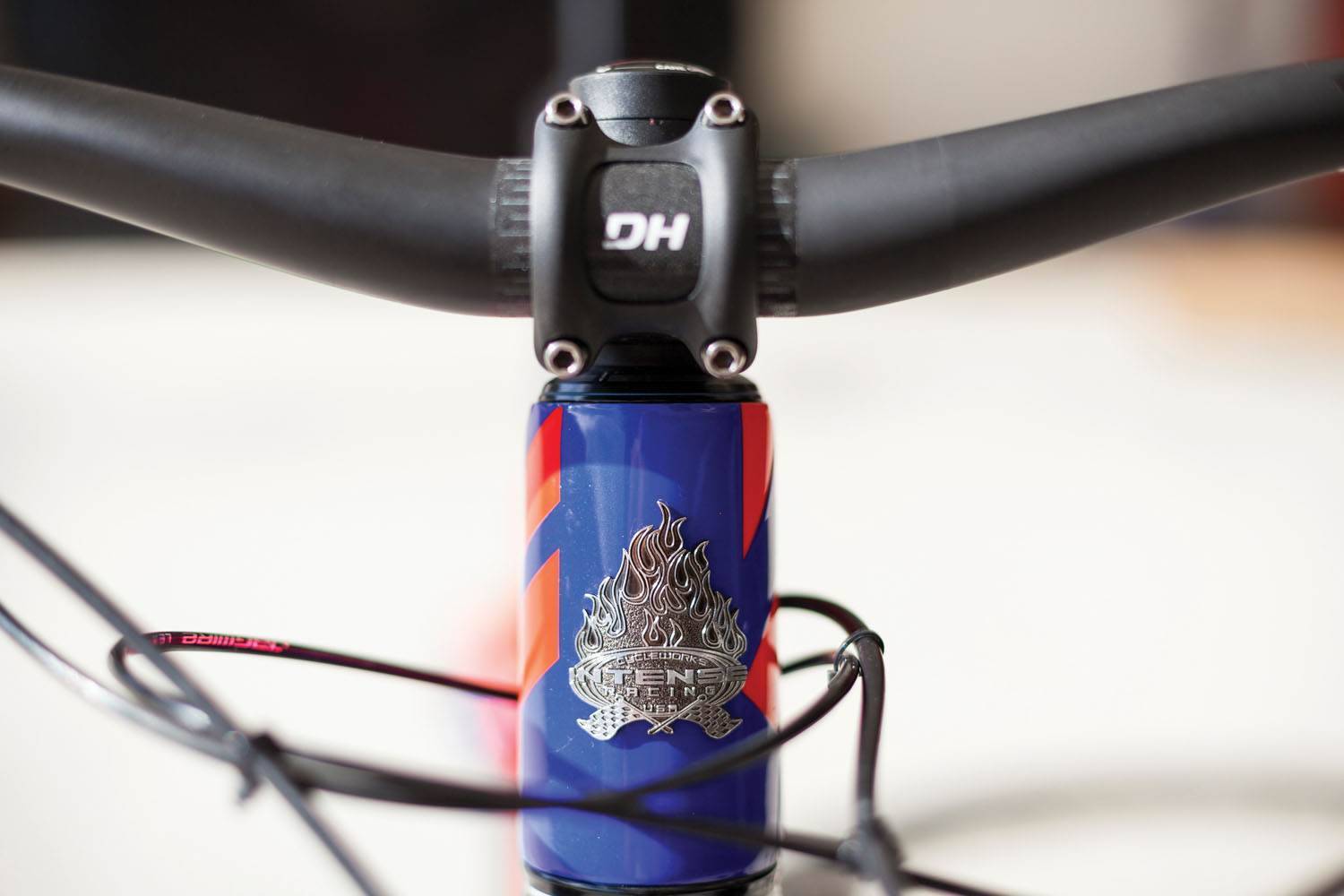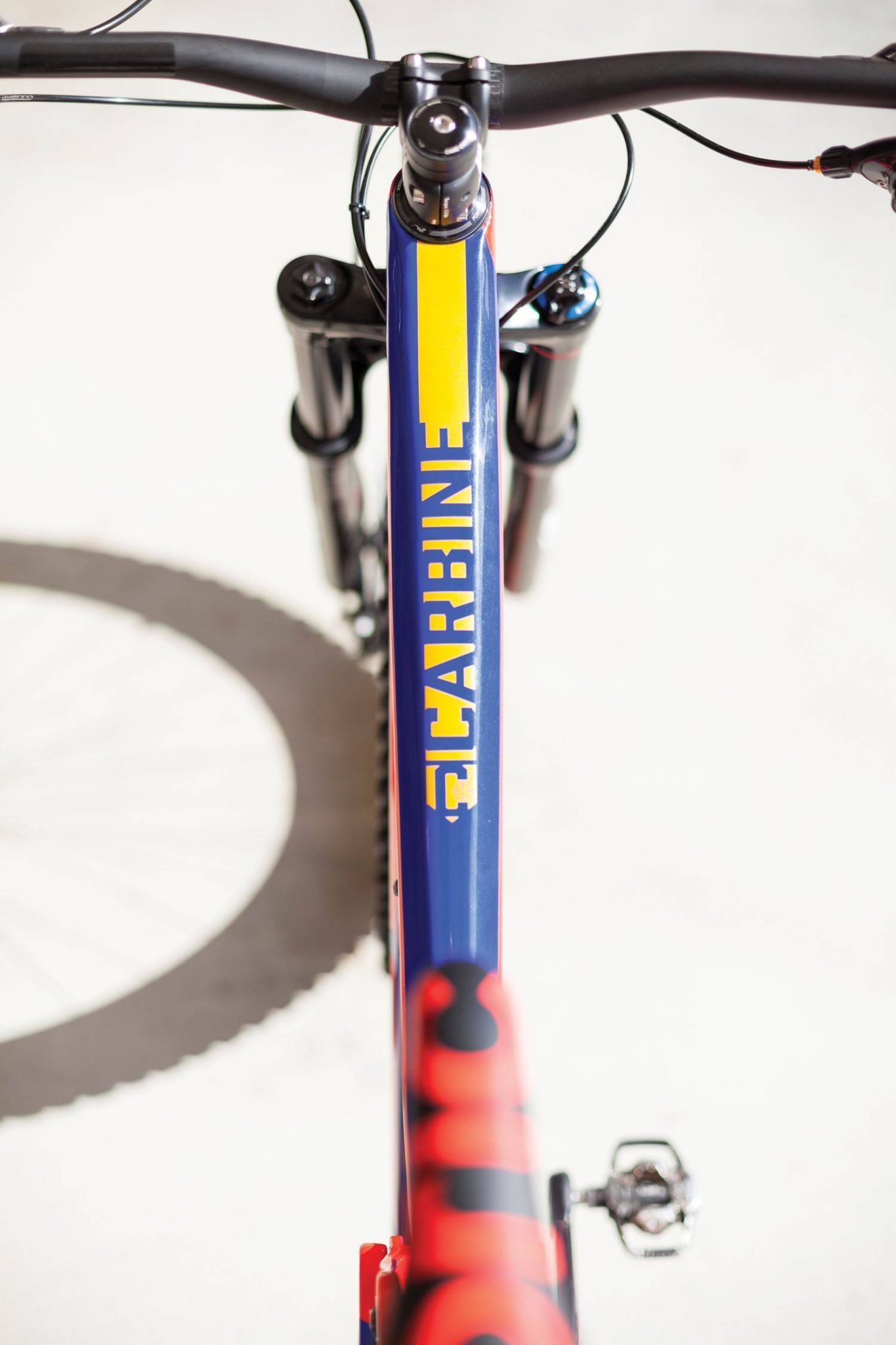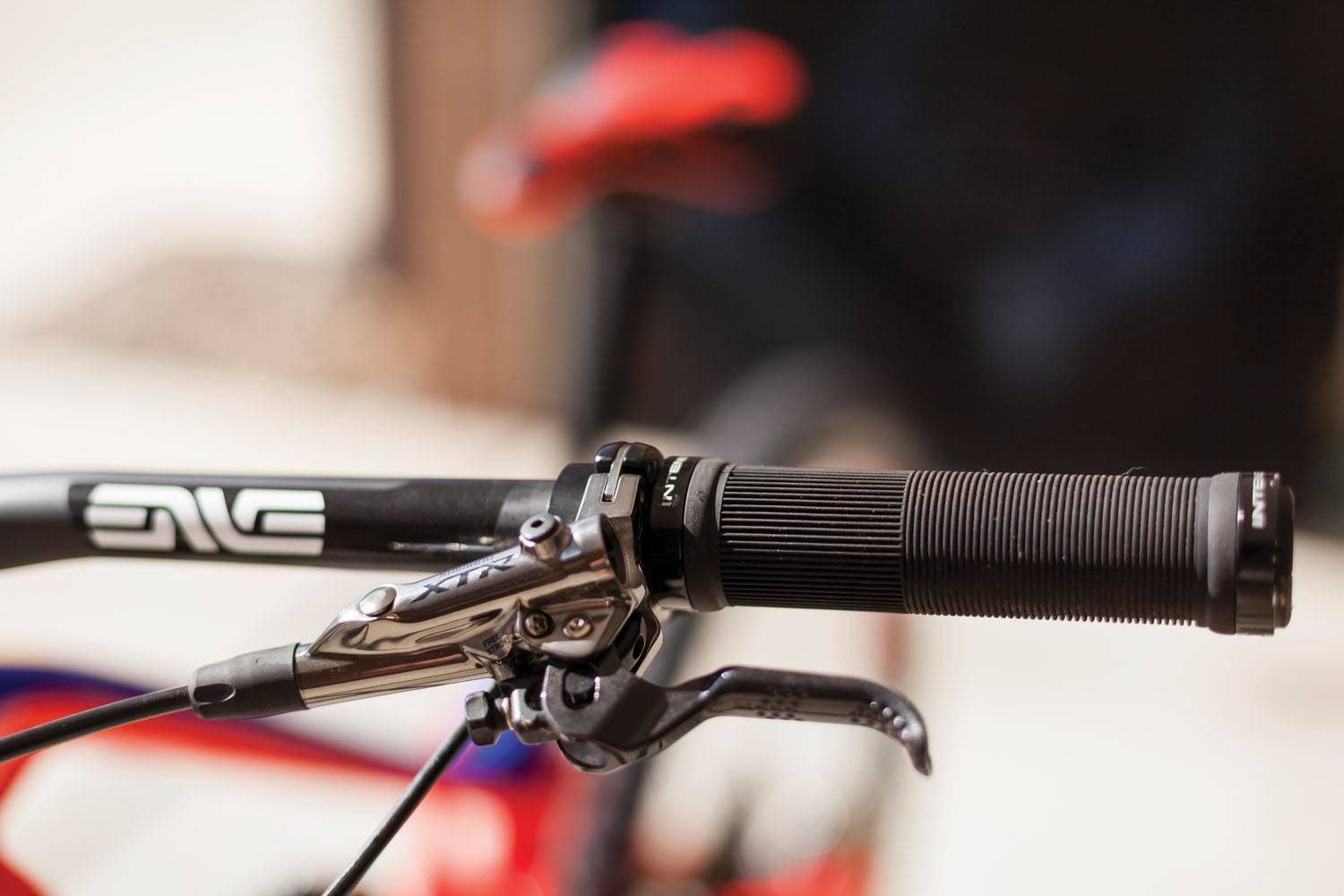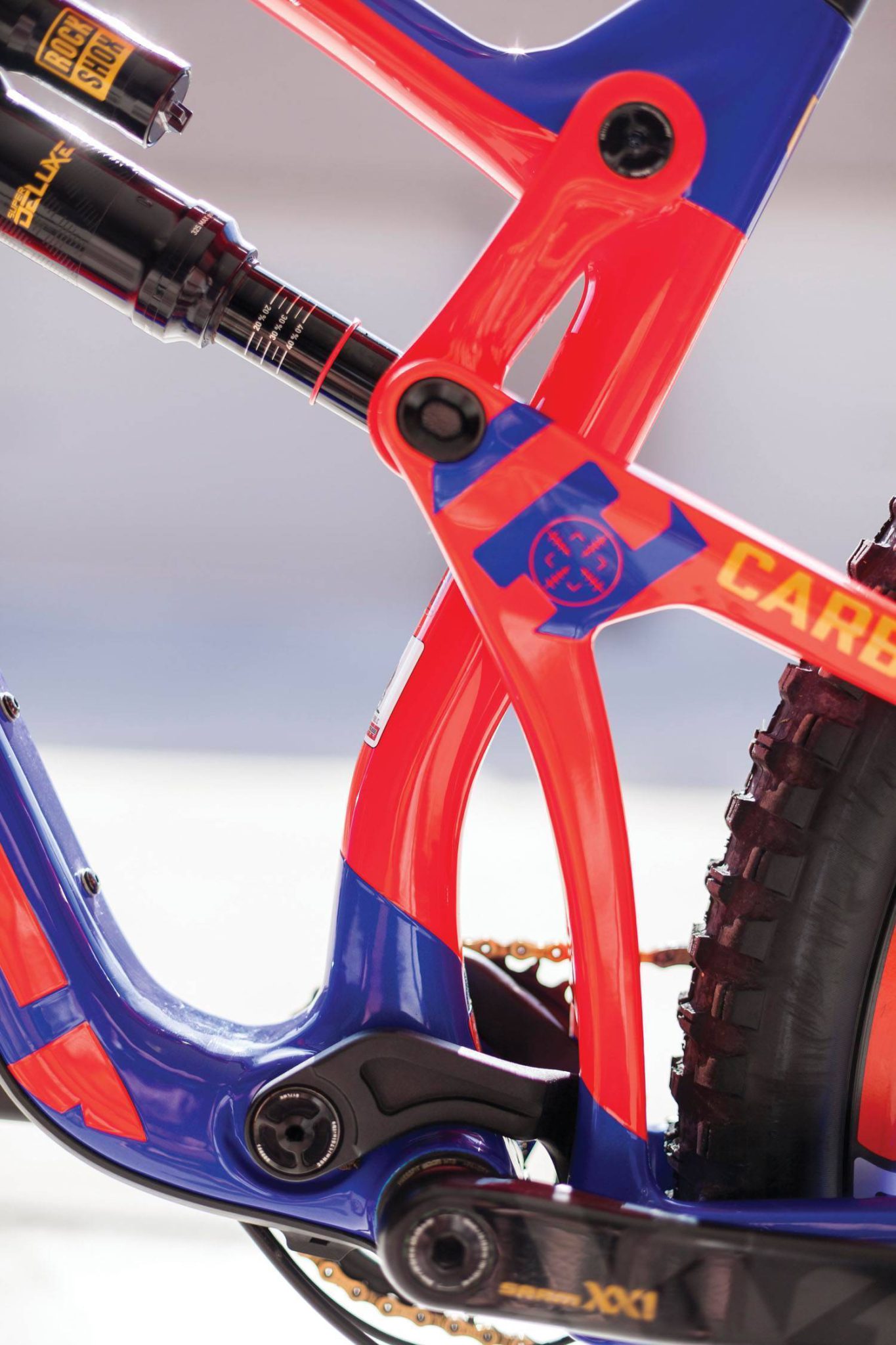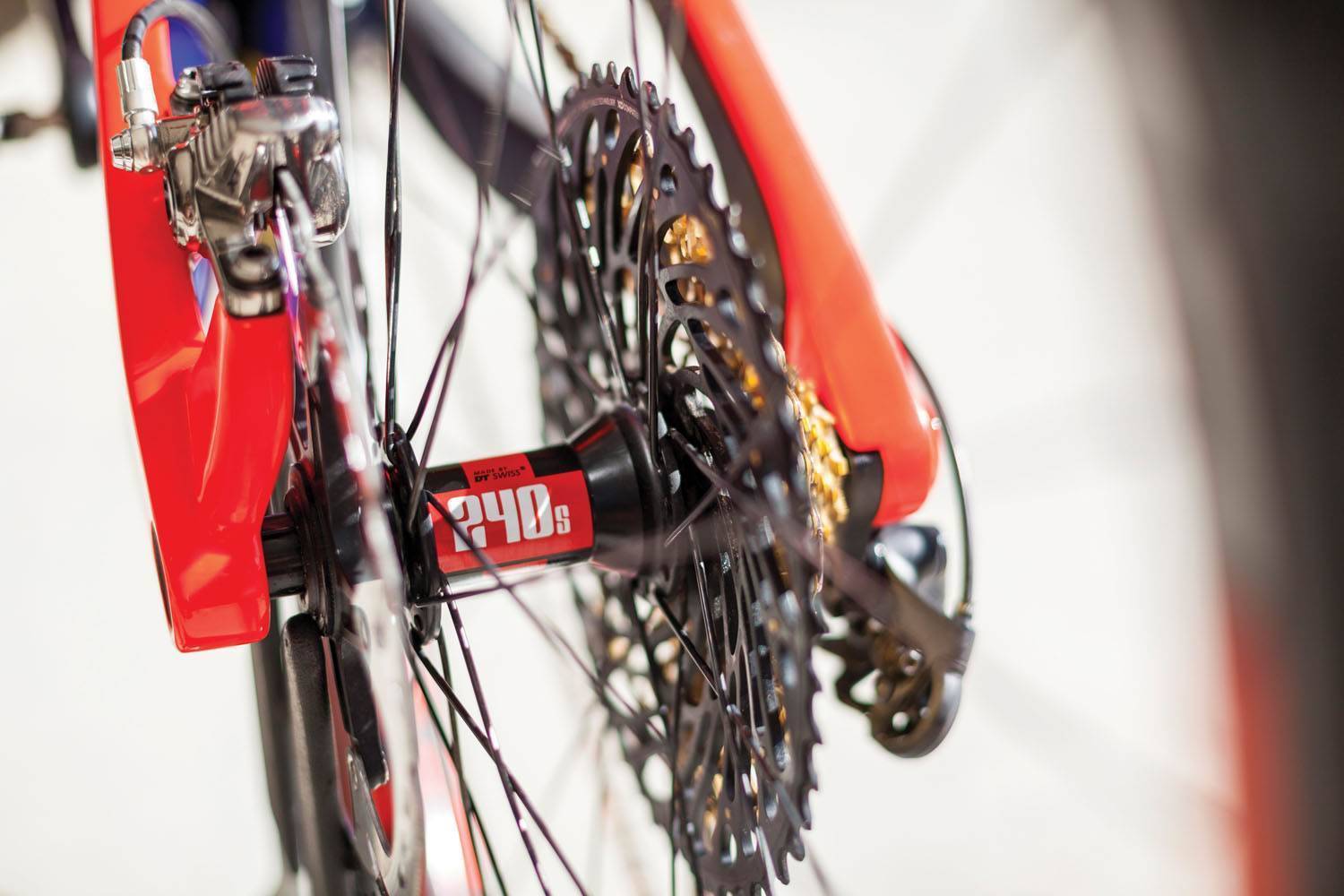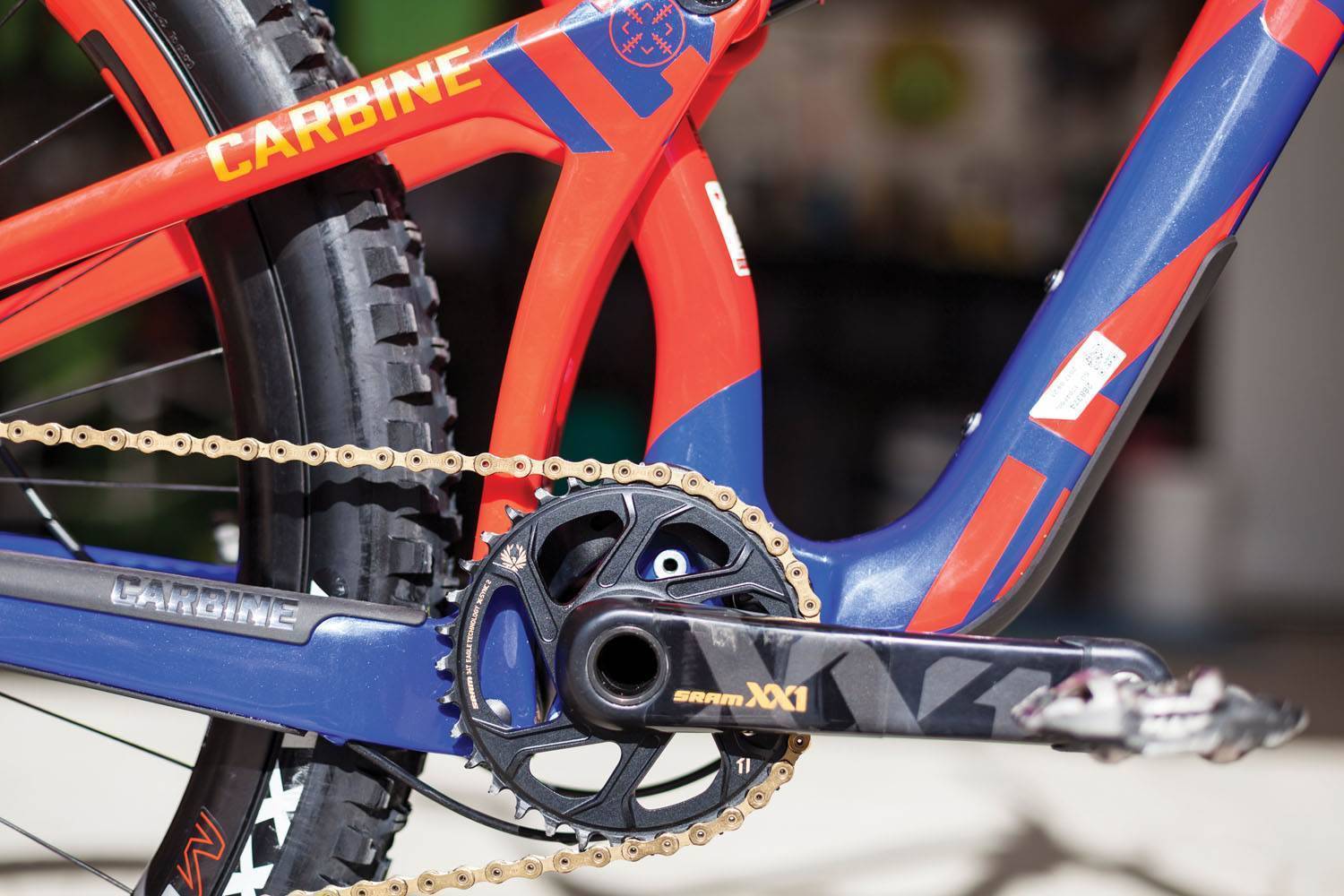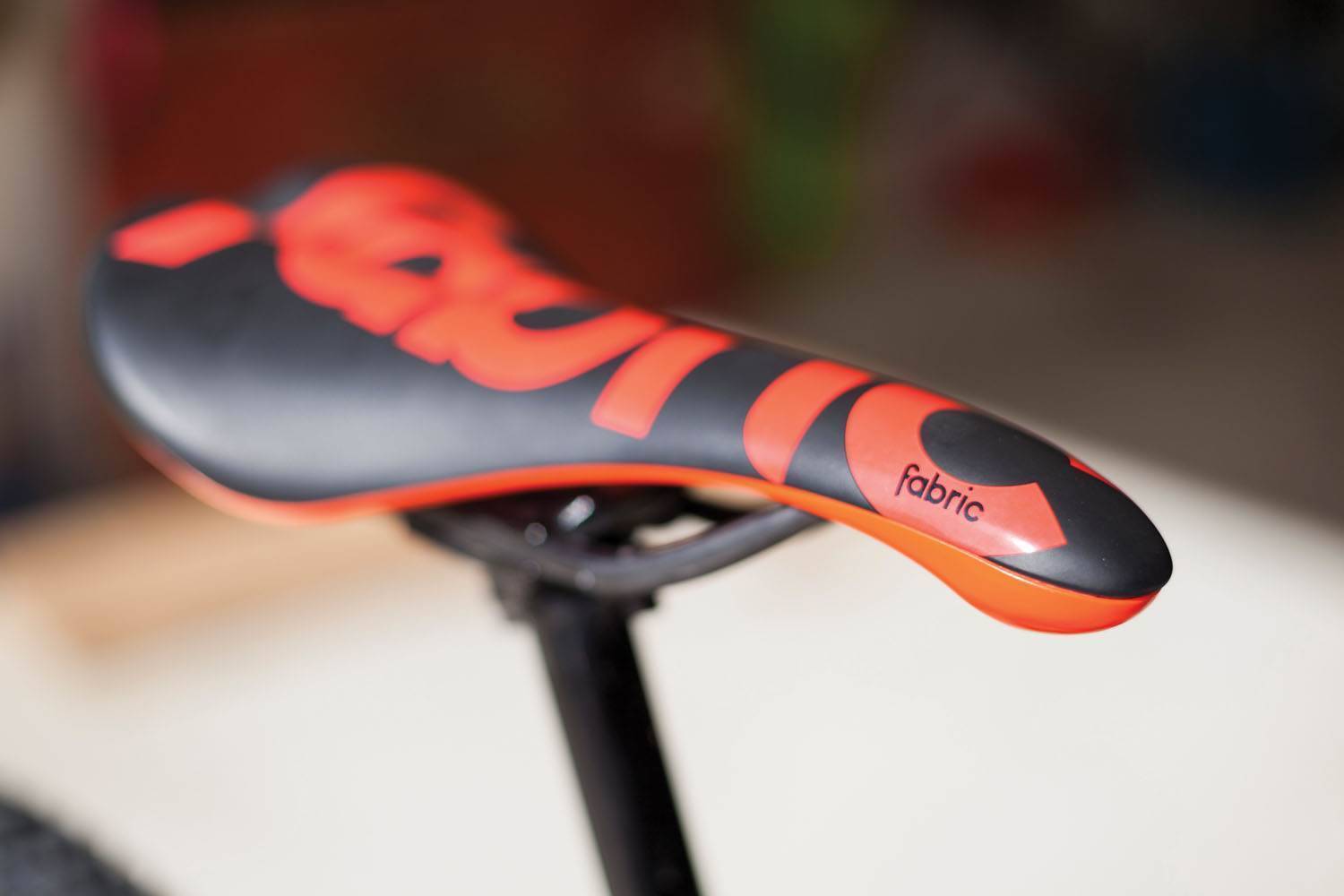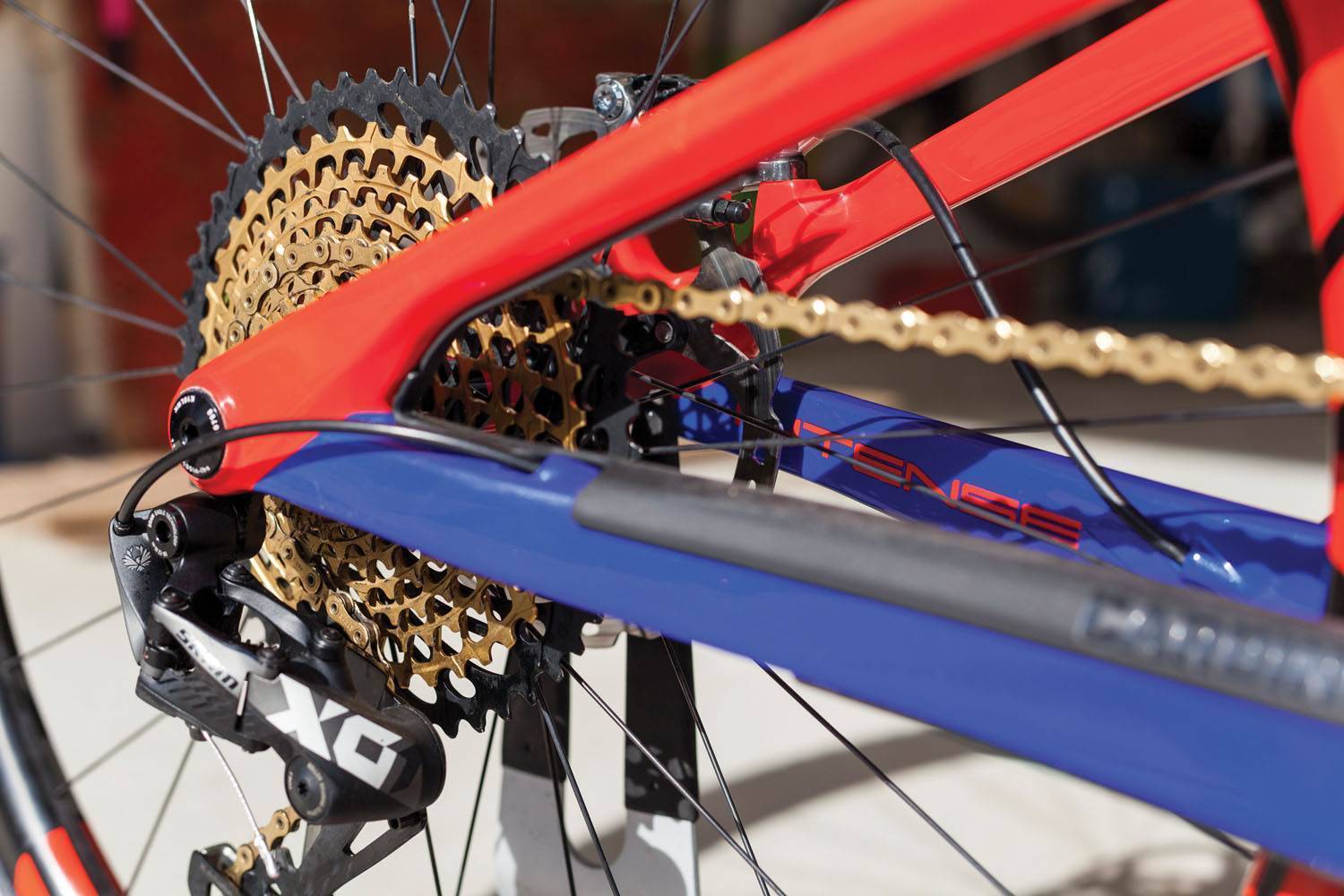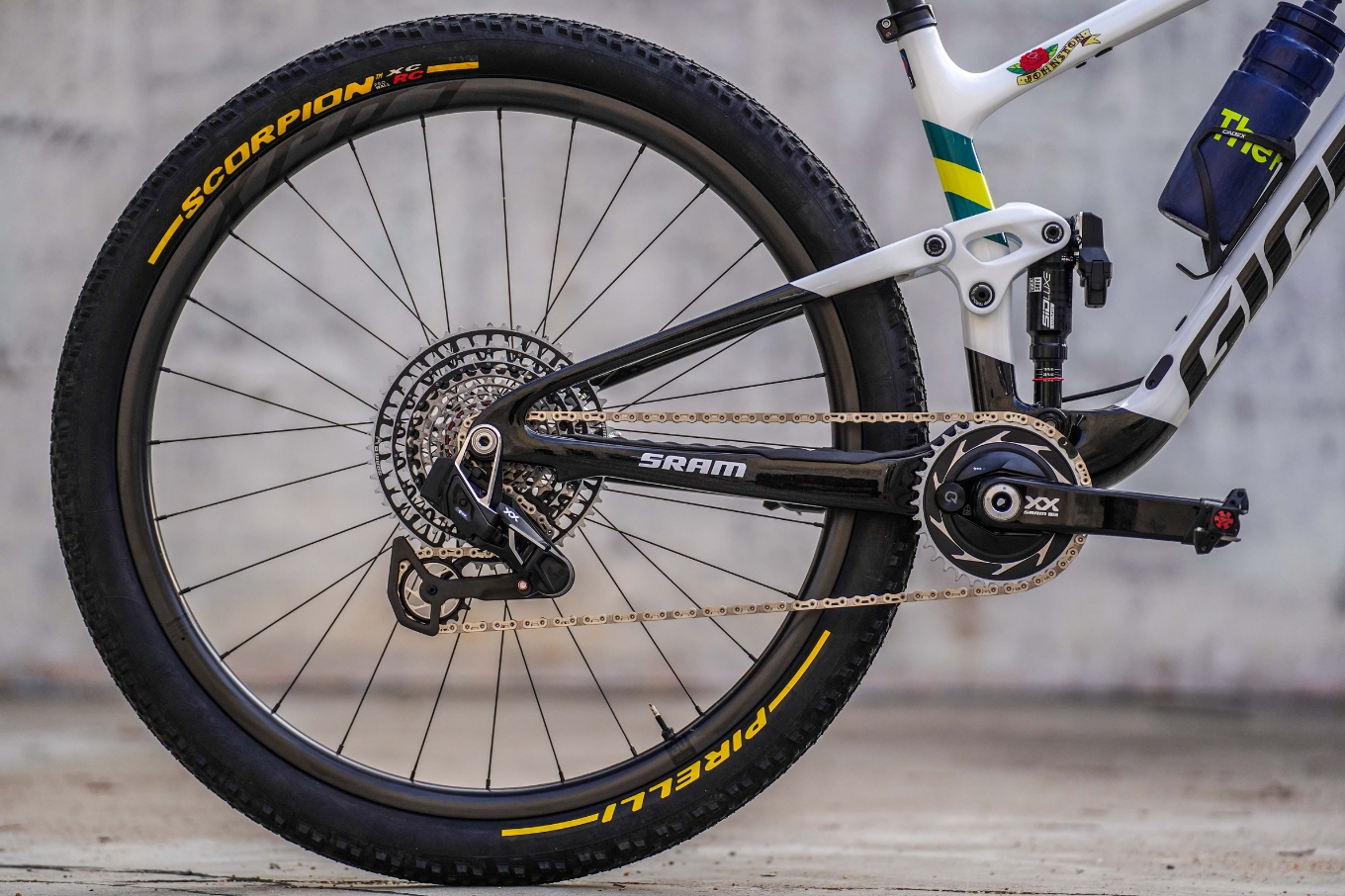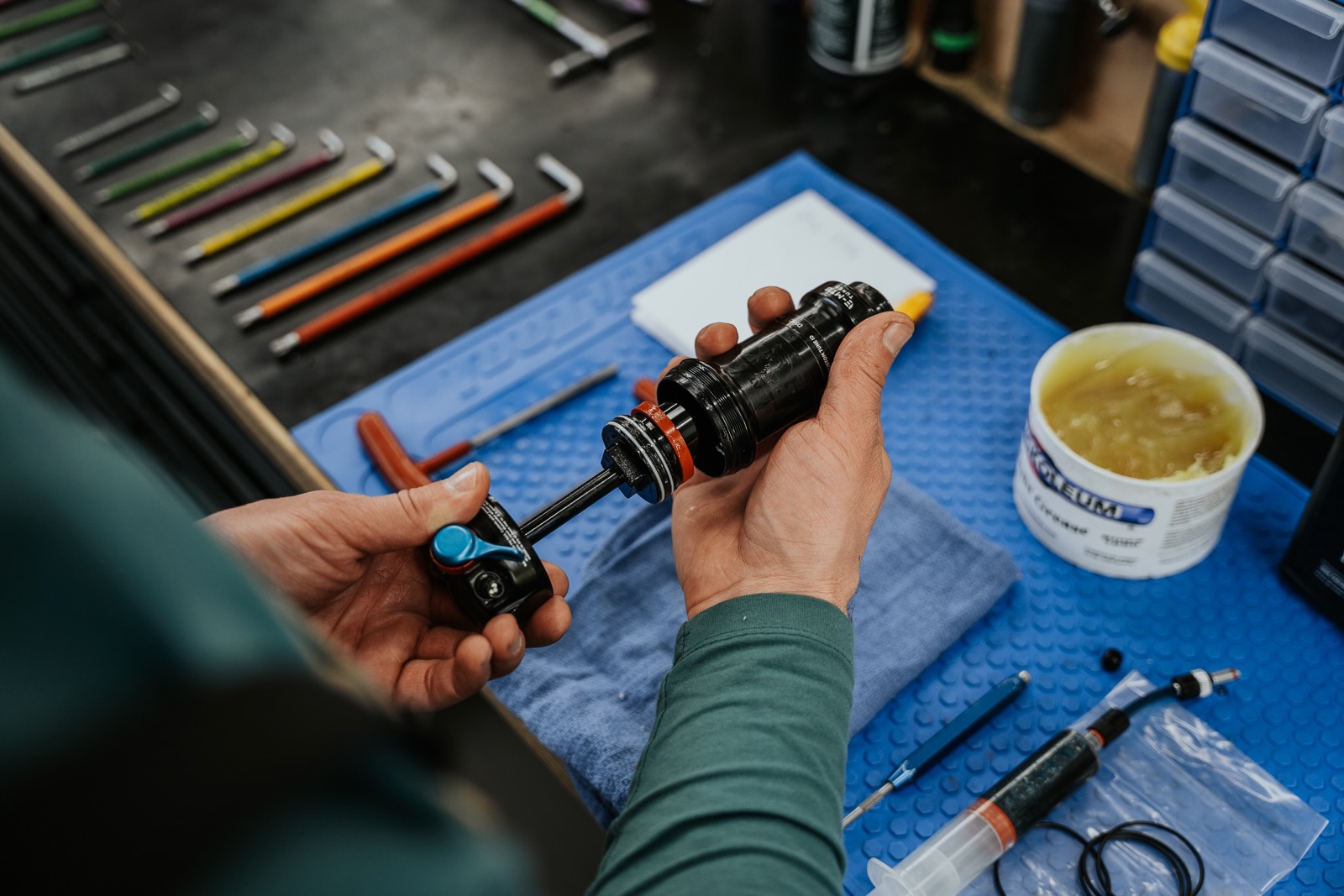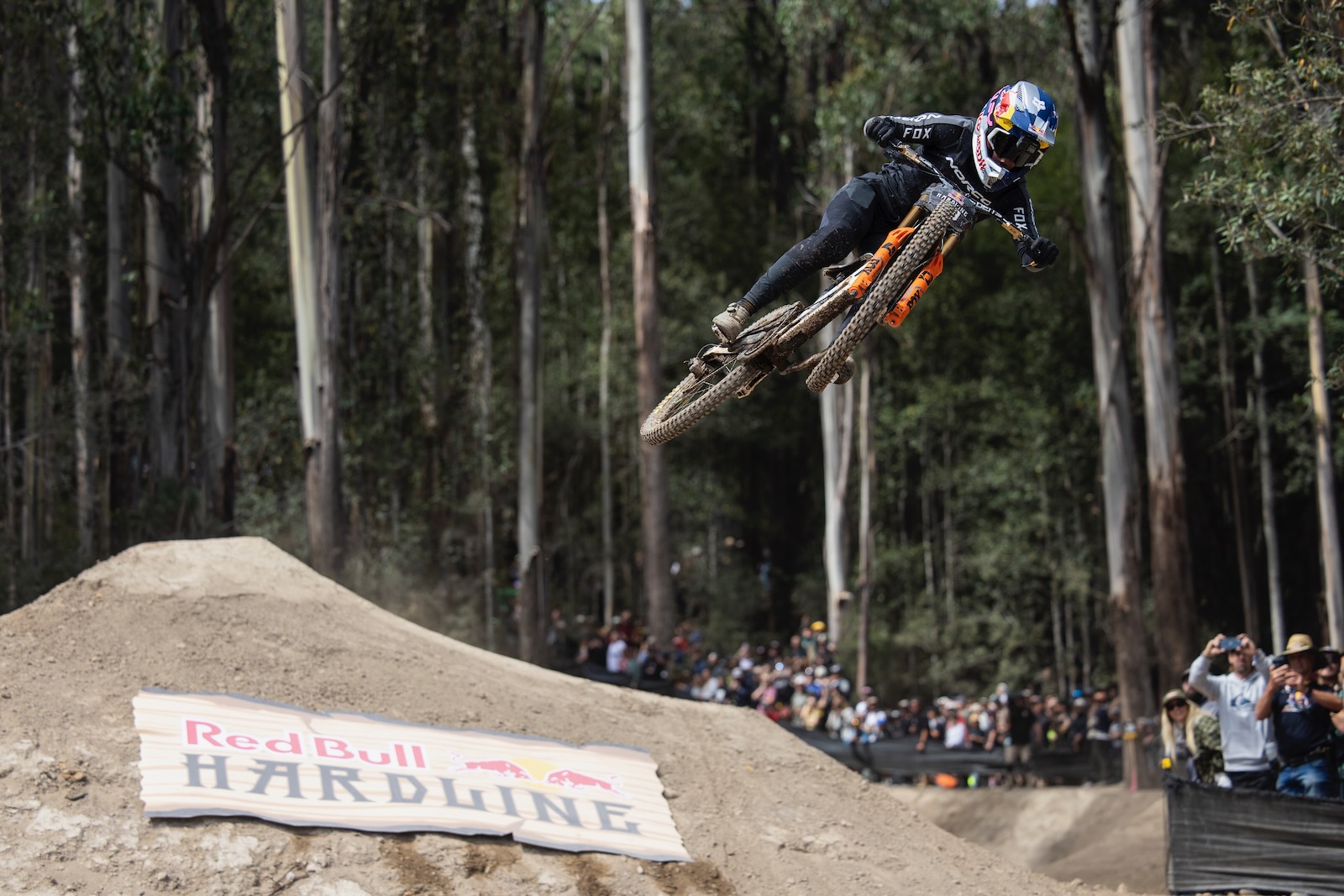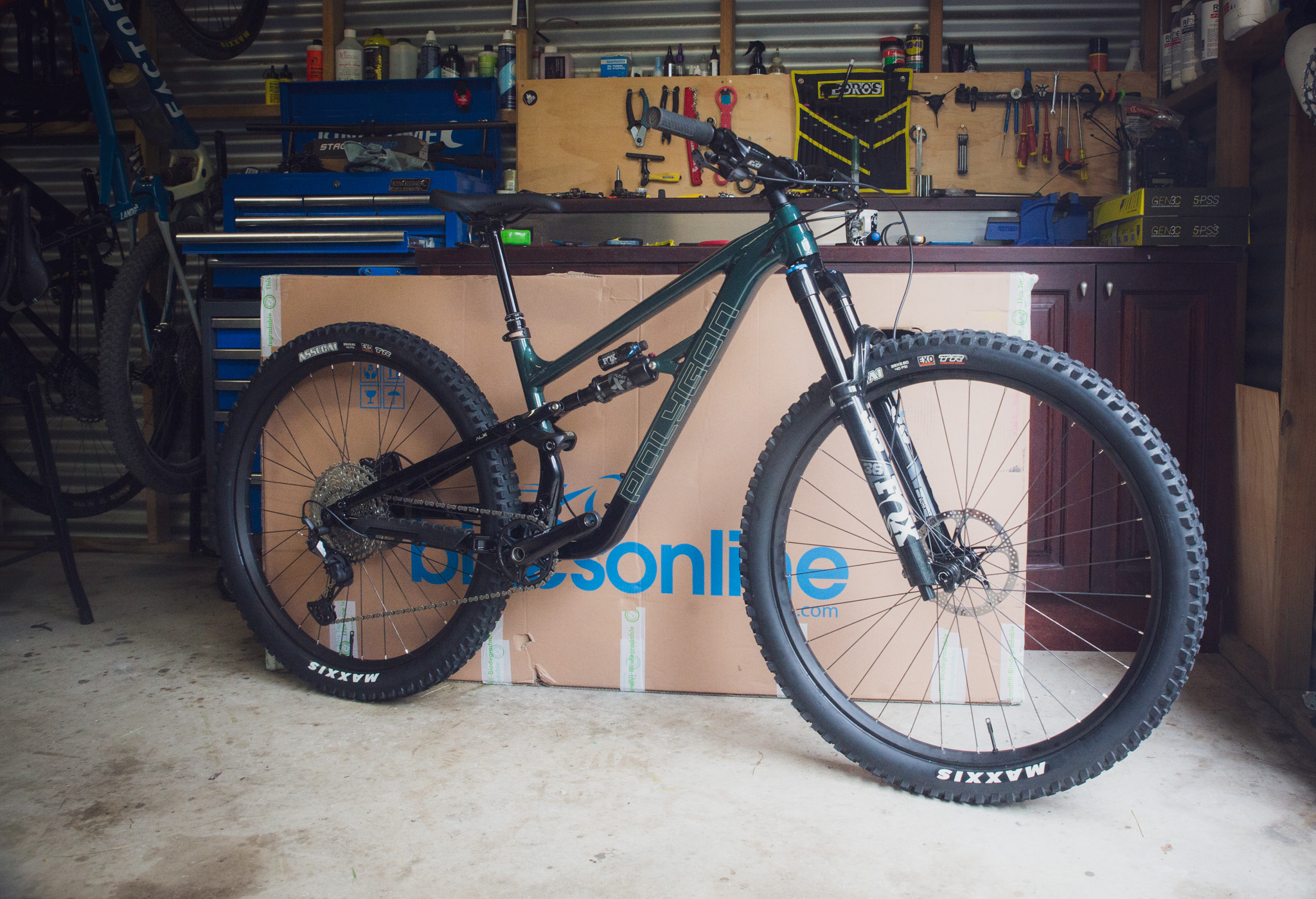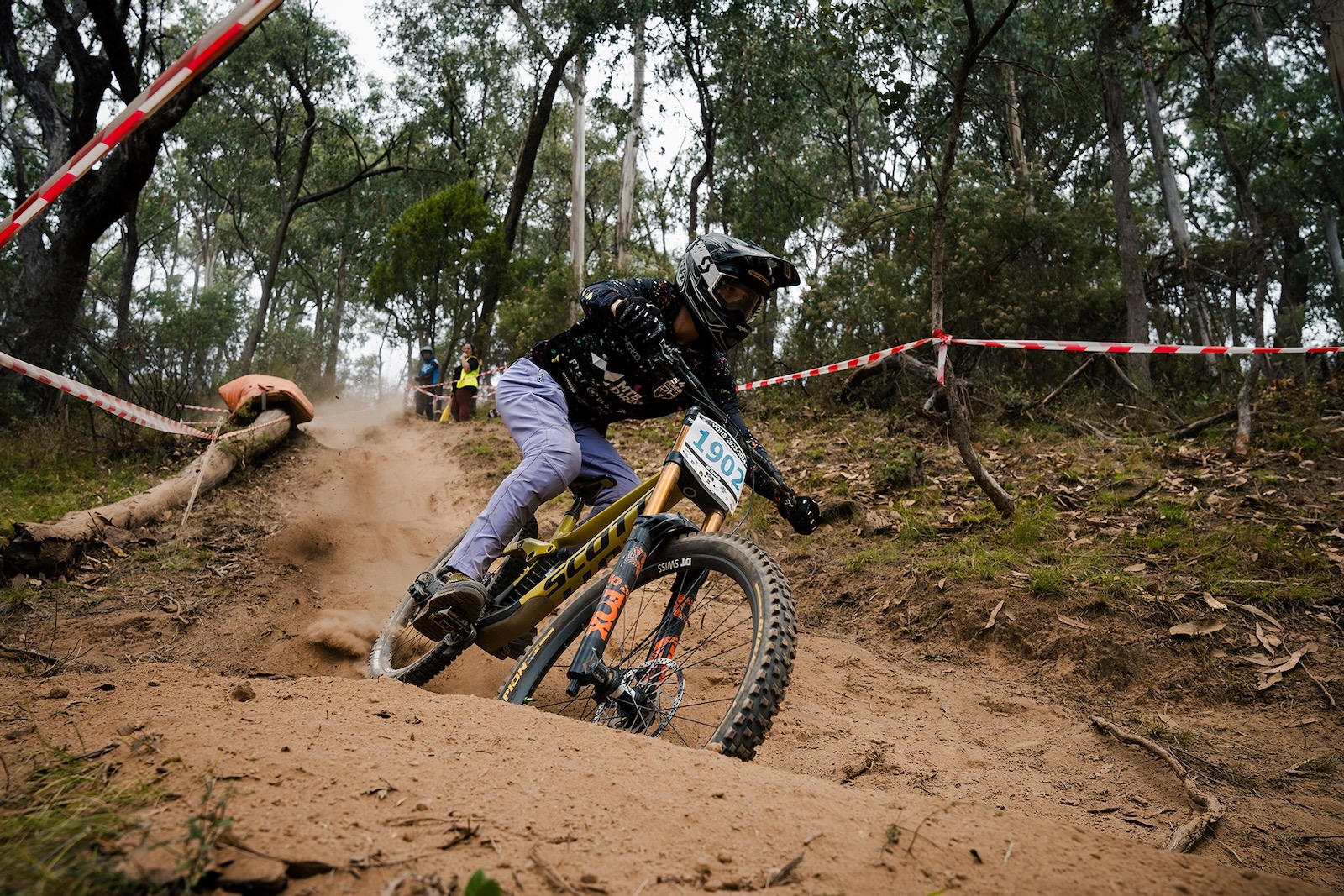TESTED: Intense Carbine
The revamped Carbine is strong enough to withstand the abuse of the Enduro World Series - and hella aggressive.
Photographer: Nick Waygood Words: Damian Breach
Intense is a bike company with a lot of history and heritage. They have always led the market in long travel downhill bikes and were the go-to brand of the late 1990s and early 2000s. Legendary multi-sport bad-boy Shaun Palmer was their poster child and that heritage of speed and attitude still sticks today.
However, over recent years, Intense has successfully transferred their downhill history and experience into their trail bikes (they were actually one of the first to experiment with a 29er downhill bike) and the all-new and updated Carbine is a testament to that legacy and history.
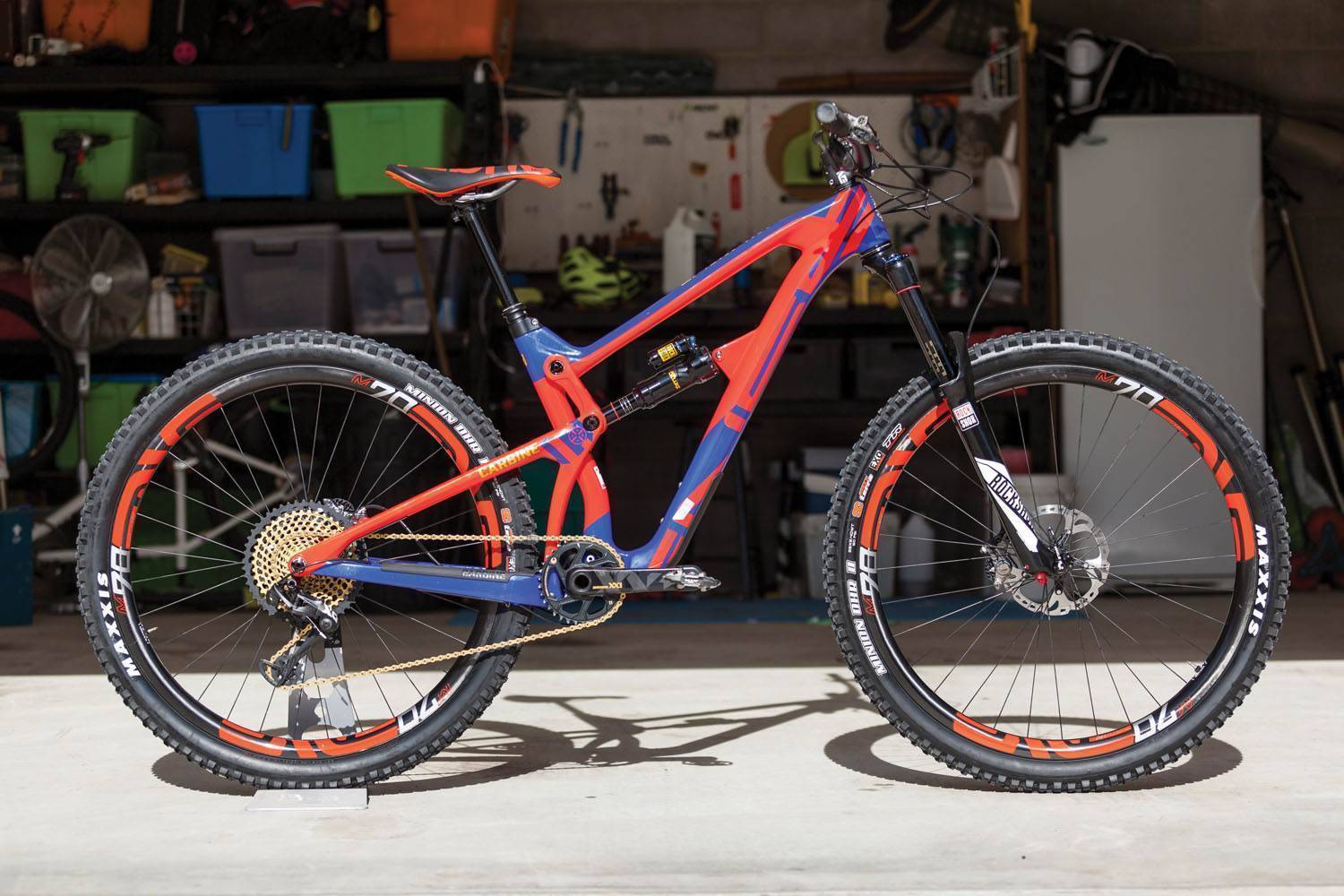
The Carbine has been in the Intense line-up for about five or so years, but this update is significant in the sense that it’s pretty much a re-launch. It has been updated with longer travel and now sits at 155mm, new geometry (including a longer reach) with a nice slack head angle of 65.5 degrees, updates to the suspension design (JS Tuned Enduro Link) to optimise the leverage curve and axel path, and an overall modernising of the platform to produce a bike that is designed for the extremes of enduro racing.
The Carbine range comes in two different carbon frames (SL and Standard carbon) and multiple price points, from the Foundation Build at $5,999 to the eye-watering Factory Build we tested, a cheeseburger short of $15,000.
The Carbine sits in a relatively young, but increasingly crowded, market place of long travel 29ers – where the likes of Trek and Specialized have been almost alone in the past. Even this year there have been further introductions into this space with Marin, Orbea, Norco and many others showing that long travel is definitely the comfortable domain of the 29er trail bike now.
At first glance
The first thing I thought when I picked up the bike was, “Hot dang, look at all that bling.” The Carbine Factory Build is absolutely dripping with only the best parts and, when you add that little hint of gold SRAM Eagle, it’s a head turner for sure. Not only does it bling, but I was grabbed by how tough and aggressive it looked – with big tubes, slack and long geometry, wide M70 Enve rims, a wide and aggressive Enve cockpit, and a striking (but admittedly polarising) paint scheme.

Intense call the Carbine a “29-inch Enduro Race Machine” and my other first impressions were just that; it looked strong and built to withstand the abuse of the Enduro World Series (EWS). This tagline from Intense can be backed up too, since this bike (in a few disguises) has been through a tough testing regime on the EWS circuit with Aussie Jack Moir already having good results on the new platform.
“Big” is a word I found myself coming back to frequently and Intense haven’t skimped on any area of the bike. Big linkages, big solid chain stays, big bearings, big everything. With all this big I expected the bike to weigh a ton, but at a little under 14kg (claimed) it sits pretty well for what you’re getting. The Factory Build features the lighter SL Carbon frame with an all-carbon upper link, so weight savings were obviously a goal.
Something uncommon, though, is the mix of Shimano, Fox, and SRAM products. Generally a bike model stays in one component camp or the other, but the Carbine’s mix of Shimano XTR brakes, Fox Dropper, and SRAM drivetrain was a little unusual. It’s not strange in terms of performance, I as feel the best parts for the job were selected, but definitely different in terms of aesthetics. Maybe I’ve been conditioned by the marketing departments too much?
Setting up the Carbine was simple and I undertook my usual regime with test machines by copying my settings from my everyday bike. I was able to get all my measurements pretty much the same, although the front end does sit a little higher than what I am used to and so I was interested to see how that would transpose to the trail.
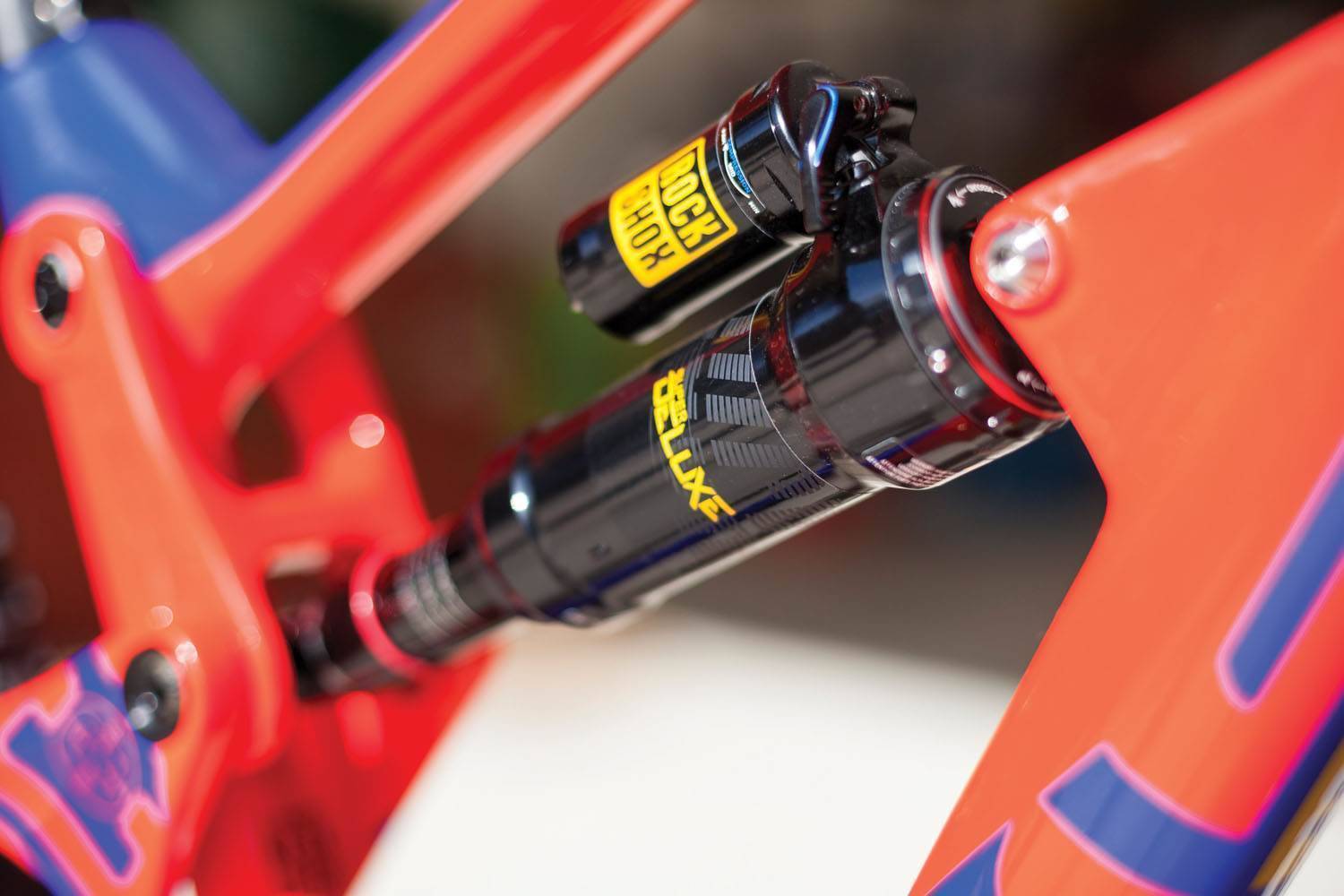
I also set up the suspension with 30% sag on the rear and 20% on the front. I tend to run my suspension a little firmer than that, but wanted this bike to tell me its story first and then make further adjustments later.
Taking to the trail
Before we get into the fine details, I would like to explain my testing process. Generally I like my first few rides to be blind. Not in the sense of closing my eyes, but rather being blind to the technical and marketing details of the bike.
I deliberately avoid reading articles or even glancing at the marketing material because I don’t want to be prejudiced by it all. I want to ride the bike with a 100 per cent open mind – and as time goes on I reach back to the materials and information to explain or enhance my thoughts and feelings.
It’s also important to remember what this bike is made for. It’s not made to go up hills like a gazelle, but it should get you up a long climb without making you too tired to absolutely pin the downhills. Think of your traditional European Alps ride: A long three-hour climb with a mix of fire-road, singletrack and some hike-a-bike all the way to the top.

That’s followed by a baguette, some cheese, maybe a little wine, and then about one hour of the toughest, roughest, and loosest downhill runs you’ll ever do. This is also true for enduro racing, apart from the wine bit. EWS races are all about very long days on the saddle, with some pretty epic climbing interspersed with long intense (no pun intended) downhill racing in-between.
My initial thoughts from my first few rides on the Carbine were…“Holy s**t this bike is fast!” This thought and feeling stayed true for the three weeks and 15+ rides I had on the bike. Hands down it’s a fast bike and the longer I had it the more confident I felt. I was hitting gaps that I was previously hesitant to do, over-jumping things, trying different lines, and generally going much faster.
I am not a data riding person and cannot confirm these feelings with numbers, but the amount of over-jumping I was doing and overconfidence I was feeling was enough to confirm things in my mind.
I am generally an in-betweener and can ride either a small or medium, however these days I tend to only go for mediums as I enjoy the increased stability of a bigger bike. There’s no doubt that the Carbine is a big bike. 29” wheels, 2.4” tyres, and 160mm of travel all makes for a tall and long bike. However, I felt that it fitted me well. I still had room for the 150mm dropper (with about 1cm of seat height adjustment available) and the reach of the front end didn’t feel uncomfortable or unnatural.
The short 40mm stem and high front end did mean that super steep switchback climbs were more of a challenge (as the front end wanted to lift) but not impossible. I was also surprised that the wheelbase of 1205mm (medium) didn’t feel as long as it may appear on paper. In fact, I was able to ride the infamously impossible Black Snake climb at Stromlo on my first attempt – and that’s one trail that will highlight negative aspects about the climbing abilities of any bike.
I am not saying it’s going to get you to the top of the hill quickly – that would be a lie – but it will get you to the top of the hill comfortably and somewhat efficiently. And you can’t ask for much more from a bike like this. Even the 50t of the Eagle makes life pretty damn easy to get to the top.
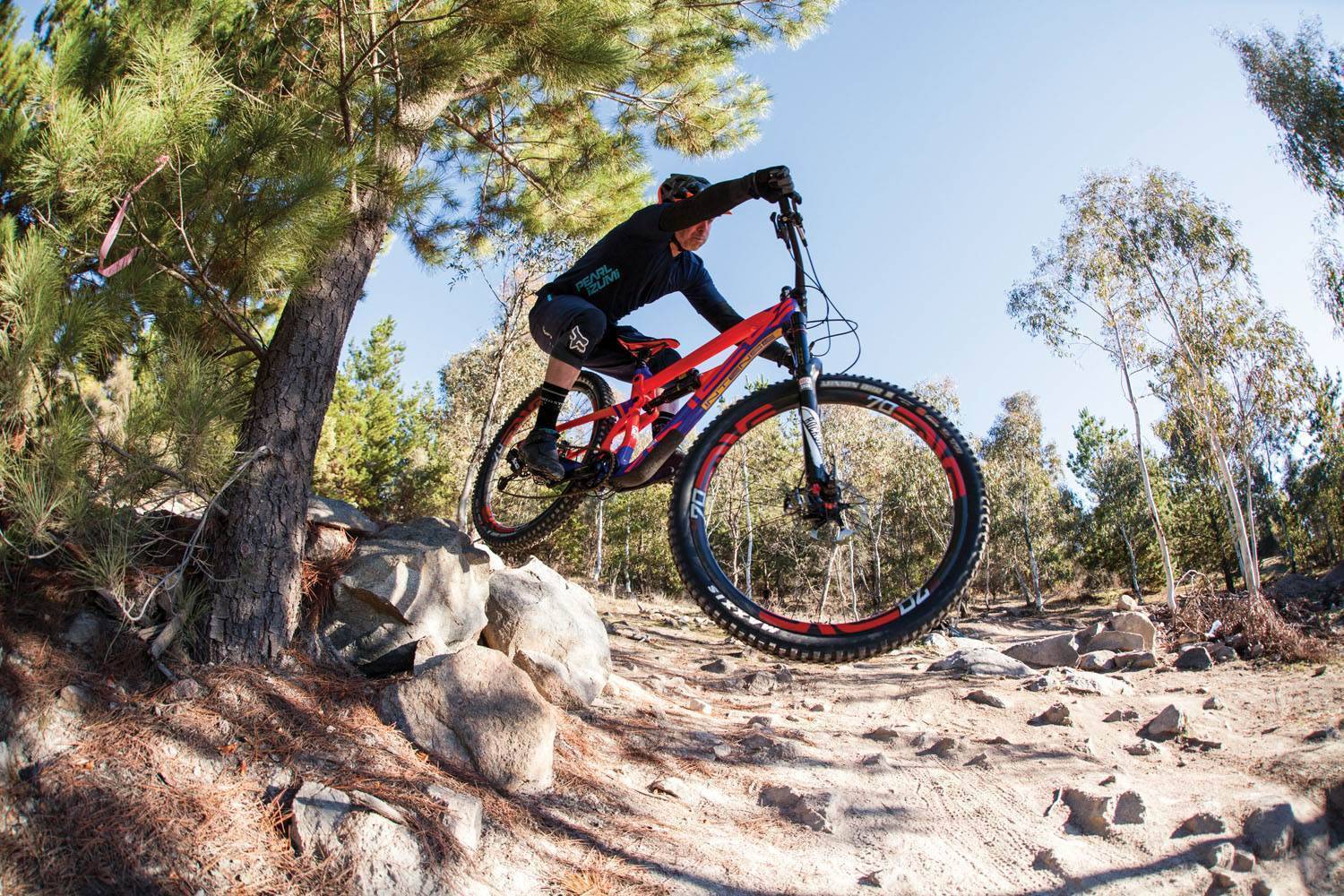
Descending, which is ultimately what the bike is made for, was where the Carbine really, really shone. It does take a little more effort to get up to speed on such a big bike, but once you’re there it is pretty damn hard to stop it. The combination of excellent suspension, aggressive geometry, and very stiff and strong Enve rims meant that I was literally floating over rock gardens and rarely getting stuck in holes, which can suck momentum and speed.
The whole platform was very confident when hitting very large high speed bumps and bottoming out never felt harsh or too quick to blow through the travel. Even the small bump performance was pretty good which showed that the JS platform was working as per advertised. Getting my weight back and lifting the front end wasn’t an issue and doing manuals and wheelies was also pretty simple.
I only had to play with the suspension a fraction from my original set-up and it was more about stiffening it up a little as I was carrying more speed into things. I was able to add more air and get it to about 25% rear and 18% front sag. And speaking of suspension – the Open, Trail, and Lock-out setting on the RockShox Super Deluxe worked well and was pretty much a hardtail in the lock-out setting.
I tended to only use the Open and Trail settings and ultimately left it on Open all the time as the rear bob on climbing wasn’t a major issue (but was more noticeable when you stood up and put in bigger pedal strokes) and I found the extra small bump performance on technical climbs and flats advantageous.
If I were to make a statement overall about how the bike handles I would say it’s aggressive, very stable, and has a positive feel with a truck-load of traction. It’s the type of bike you can point and let go and have a sense of confidence that it will handle everything in front of you, including making up for your mistakes and poor line choices (which I did many times in the test period). Basically, just point it with confidence and trust in the bike. It will rarely let you down.
Negatives of the ride? The first point is probably more related to my riding style than the bike itself, but worth mentioning and understanding. I generally don’t hold good speed through corners and I tend to rely on using my legs to get me up to speed at every exit. I’m like a little rabbit that sprints between corners, rather than a smooth steam train that flows through them.
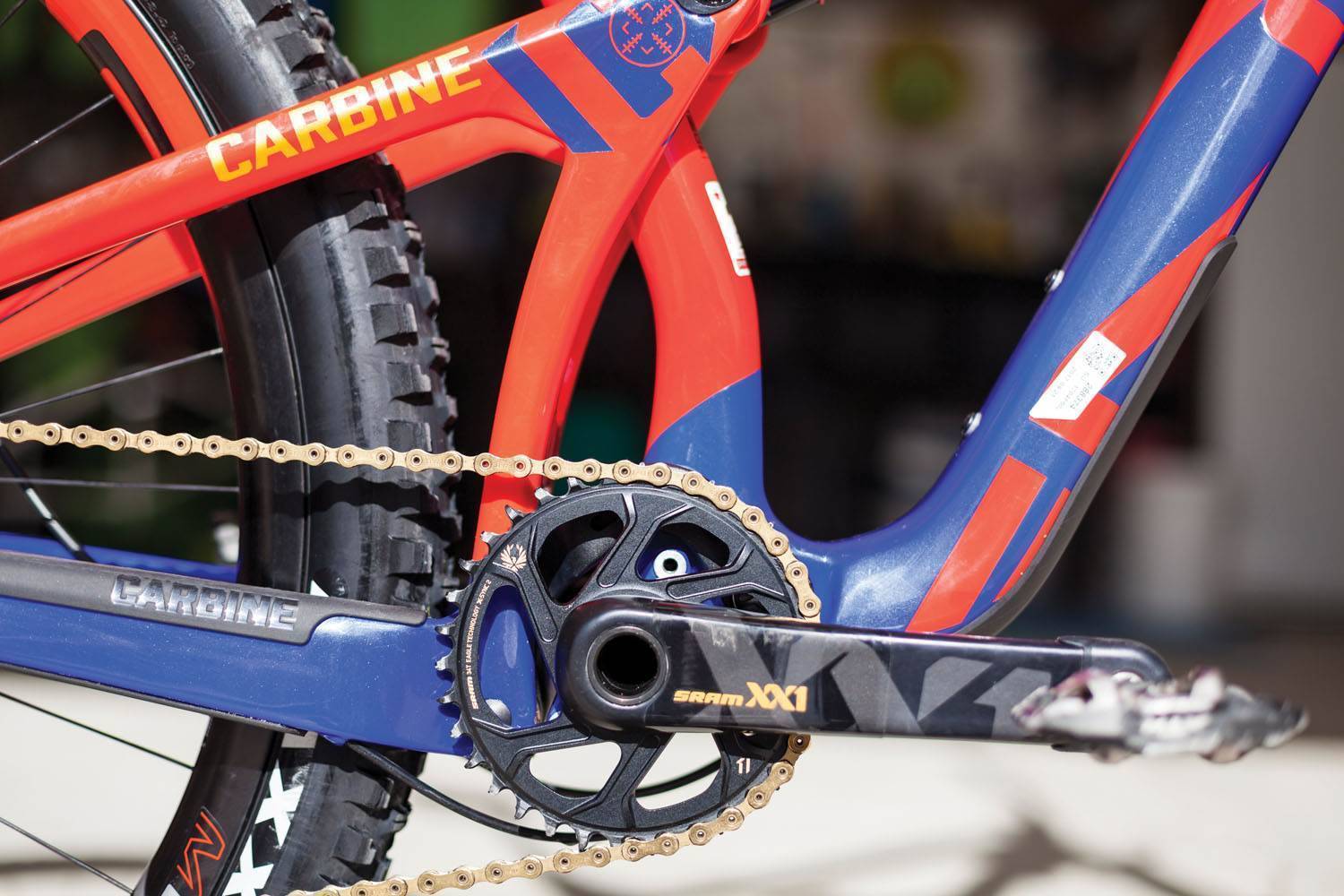
The Carbine does take effort to get wound up and thus it was more effort for me than I am used to. That being said, though, and echoing what I have previously stated, the bike is incredible at holding speed and I was starting to experiment with changing my style to suit that ability.
If I owned this bike I would definitely concentrate on working on my cornering technique to take full advantage it. However, if you’re the type of rider who naturally has good cornering speed then this bike will scare you with speed in the bends.
A second point of note (and not a negative at all) is that the frame is actually designed to accommodate up to a 170mm dropper. However with my height I could only fit a 150mm, so that’s something you would have to consider if you’re an in-betweener like me. You can either have a smaller bike with bigger drop, or a larger bike with less drop. I still prefer the bigger bike as 150mm is plenty of seat drop for me and I was never wishing for more.
The final point was some noise from the rear end on big bumps. I wasn’t able to work out if it was cable or derailleur induced. The internal cable routing is guided inside the front triangle (and even protected with foam) and was totally silent but the routing through the chainstay wasn’t the same. Call me picky but I do like a silent bike and for the most part the Carbine was as quiet as a mouse.
Our Take
The Intense Carbine is a very fast and capable bike and there’s no doubt it meets the goal of being an enduro race machine. It excels at going super-fast when pointed downhill and if and you’re up for the task it will hold incredible speed though corners and across the deepest rock gardens.
It will also jump, and jump big, and I even got to test the strength of the Enve carbon bars with some huge over-jumping. It met all the marketing hype and even highlighted that the 29er has come a long way in recent years – to the point that I wouldn’t be surprised if the bigger wheels start taking a larger market share in the long travel market.
I have no doubt that this bike will make you a more confident and a faster rider. But is it good value? That’s a hard question as $14,999 is a whole truck-load of money and people see value differently. As a sum of its parts you can see what you’re paying for and the level of bling would make Kanye West feel a little inadequate.
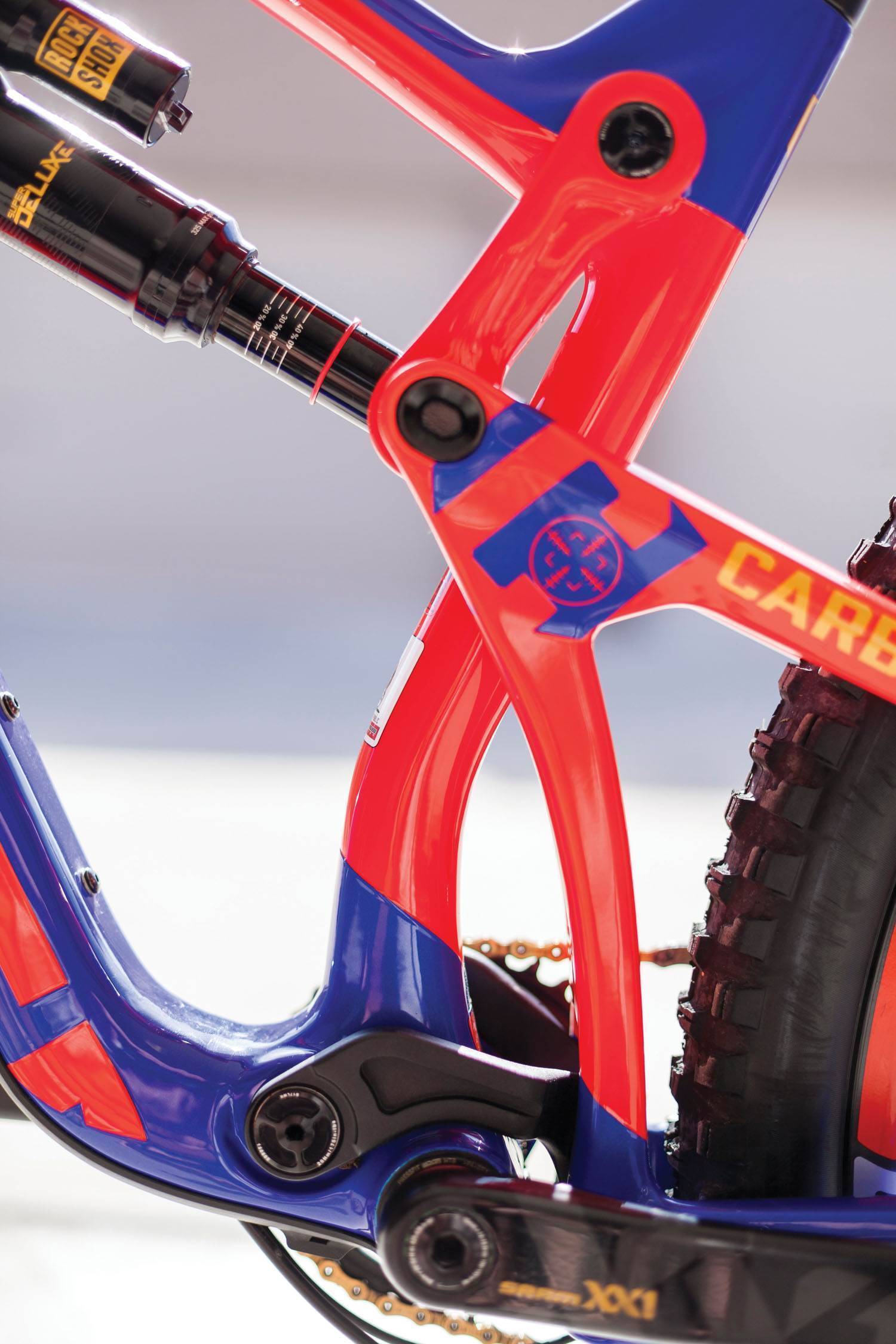
If you’ve got the money then sure, go for it, but most probably many of us don’t – and that’s why it’s great that the entry level for this bike is actually at $5,999 with other price points through the range: $7,399 (Expert), $10,199 (Pro with SL frame), and $11,659 (Elite, also SL). I am pretty confident that the entire range – being that it’s based on the same platform – would give you the same feeling of speed and confidence albeit with some obvious deviation in weight and other performance points.
Overall the Carbine is an absolute weapon for enduro racing (as Jack Moir has already shown), or lifted/shuttled runs, or on any downhill/flow/general trails. This bike is ridiculously better than downhill bikes of yesteryear, and now you can ride it all day (even on the most technical climbs). In fact, I think if Shaun Palmer had this bike at the 1996 World Championships in Cairns, he would have won.
| Intense Carbine, Factory Build | |
| Weight | 13.6kg |
| RRP | $14,999 |
| From | Intense Cycles Australia |
